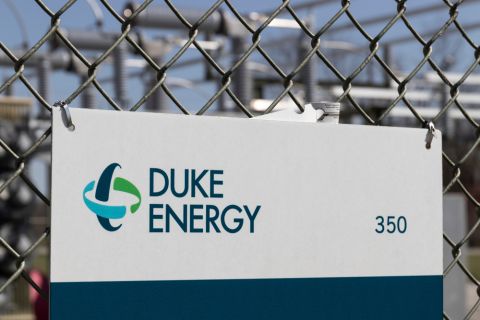 |
| This manufacturing approach allows serial production of multiple floating systems. |
The long order books in the world’s shipyards have led to a concept that will allow existing fabrication or small shipbuilding yards to be converted quickly into yards that are capable of delivering deepwater production systems. This construction solution, which can be applied nearly anywhere in the world, might also be the answer operators are looking for to help achieve their local content goals.
Shipyard in a box
Horton DDS has introduced an innovative design/build strategy to manufacture two particular deepwater floating systems — the deep-draft Multi-Column Floater (MCF) semisubmersible and a deeper draft semisubmersible (DDS) for smaller applications — through a highly automated, purpose-built production facility. This high-volume “shipyard” consists of a specially designed production facility, yard assembly areas on skid ways, and a simple barge for floating off the hull and installing topsides via floatover. The floating yard (a.k.a. “shipyard in a box”) applies a simple, modular, and repeatable manufacturing approach that is capable of creating large-scale components that are ready for final assembly. Simplicity in component design reduces the level of sophistication required of the assembling yard.
The goal of this new construction concept is to bring deepwater discoveries on production faster and more economically. Products that meet many deepwater development needs can be delivered faster and more reliably using this type of manufacturing facility in which a reconfigurable barge can be combined with existing capabilities of standard fabrication yards. Many designs can be constructed from standardized, repetitive components that can be built efficiently.
The assembly process consists of:
1. Building components using a repetitive manufacturing approach and a specially designed production facility;
2. Assembling components — either in dry dock or on skid rails for the fabrication yard;
3. Hull launching and floatover integration using a configurable barge instead of a dry dock.
This integrated design/build delivery system can address a wide variety of functional needs that include production, drilling, drilling and production, and storage.
The proprietary designs and production facility, combined with standard industry equipment, create an economic, high-throughput delivery system that can be applied nearly anywhere. And because the production facility was designed for use on a barge, it can be redeployed should demand patterns change.
Repetitive manufacturing
The MCF and DDS floating system designs can be broken down into three main structural components: tubular structures that are primarily shell and ring T-beams; pontoon structures, which are standard stiffened plate construction, and topsides deck structures.
All component manufacturing can be performed using the specially designed production facility, which was designed to work on a barge, but also can be deployed on land.
Tubular construction
The tubular structures can be constructed using a high-volume manufacturing system that is based on the methods used for railroad cars, windmill shafts, and piles. Mass production necessitated simple methods and construction equipment that can produce efficiently and rapidly. These same methods can be applied in the construction of the main structural steel for the tubular members. Unlike these simple components, tubulars require structural stiffening, which is provided by ring T-beams and bulkhead deck flats that provide the necessary compartmentalization.
Both the T-beams and the bulkhead deck flats have been designed to be built rapidly using a simple but flexible automated system that is integrated in a main production line.
The automated production system is based on the system of “one-piece manufacturing,” similar to the systems that have been integrated in a number of the higher quality shipyards around the world.
Once the components are built and integrated into individual “cans” as either simple ring-stiffened cans or deck cans, larger assemblies can be created, ultimately resulting in longer tubes that form the main structural columns of the vessel.
Cans are joined using assembly-line methods based on the same rolling and welding procedures that have been used successfully on many projects common to the offshore industry. Successively larger tube assemblies are formed such that most of the outfitting can be incorporated before the joining is completed and the compartments are closed. Dedicated stations for outfitting and joining provide efficiency and continuity in tasks, and efficient rail-based handling methods allow work to proceed continuously.
Performing these tasks in an indoor setting eliminates weather-related variability in schedules and also improves the quality and repeatability of the welding and quality assurance processes.
Stiffened panel work
The stiffened panel construction is used in both the pontoon for the MCF and the main deck structural panels. The same dedicated production facility can be used to produce these components. The flexible, automated production system also is used as a panel line. Although these components can be made with more standard methods involving a higher degree of manual labor, integrating them in a dedicated facility improves quality and productivity and allows for more streamlined delivery, providing further justification for the capital involved in the facility cost.
Synchronizing the deck fabrication processes can improve the schedule and reliability of the delivery process. Traditionally, deck structural work has been difficult to automate because of the high variability of the structural designs. Modern flexible production systems can now address this variability and improve on the processes while synchronizing build methods with higher volume panel line methods.
Block or “pancake” section assembly can be handled using the same equipment used for tubular sections, and large subassemblies can be completed indoors to avoid weather downtime.
The same facility can be used for both types of fabrication and can accommodate production needs for other major industries (shipbuilding, pressure vessel fabrication, offshore piles, and large offshore windmills).
Assembly
Once the base components have been manufactured, they can be assembled either in a dry dock using gantry cranes or on skid rails using crawler cranes or other purpose-built lifting systems. The floating system design allows all critical dimensional control processes to be completed for each of the main components prior to assembly while providing interface areas where tolerances between the components can be removed. Assembly is a relatively simple process that rarely requires major interfaces to be reworked. Outfitting has also been simplified and can largely be completed while the various components are in the prefabricated state prior to assembly.
The hull is loaded out on the barge, which is configured for hull floatoff and launching, a process that eliminates a key bottleneck of modern offshore projects. There is no need to wait for a slot sufficient to build the hull in a dry dock.
The MCF and DDS include a floatover deck installation as an integral part of the delivery system. The deck can be fully completed prior to loadout, thereby maximizing the work that can be done onshore prior to the installation. These systems require minimal integration between the topsides and hull so that the work can be integrated and commissioned onshore to the greatest extent possible.
The barge is an integral component of the delivery process and is largely justified based on its ability to perform a large portion of the installation and relocation work, eliminating a critical project variable — availability of topsides installation resources (derrick barges, heavy lifting devices, etc.).
This newly patented system is simpler than existing methods and eliminates the main sources of project variability. The shipyard in a box will allow more yards to be capable of building deepwater systems using integrally developed designs and construction methods.
Recommended Reading
Chord Energy Updates Executive Leadership Team
2024-03-07 - Chord Energy announced Michael Lou, Shannon Kinney and Richard Robuck have all been promoted to executive vice president, among other positions.
Duke Energy Appoints Harry Sideris to President
2024-03-15 - Steve Young, executive vice president and chief commercial officer, will retire from Duke Energy on June 30.
APA Shuffles Leadership Following Callon Acquisition
2024-04-09 - APA CEO John J. Christmann said the changes will structure leadership to better align with the company’s “evolving” business needs.
MidOcean Appoints Lumens to CFO
2024-05-14 - Armand Lumens most recently served as the group CFO of Neptune Energy, where he helped develop the company’s financial and IT strategies.
BP Restructures, Reduces Executive Team to 10
2024-04-18 - BP said the organizational changes will reduce duplication and reporting line complexity.





